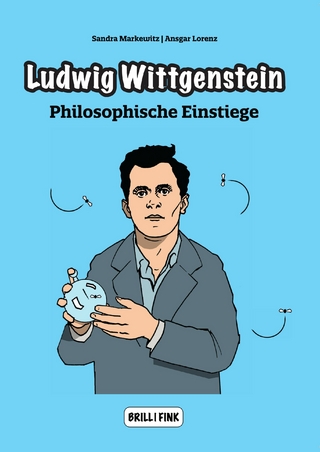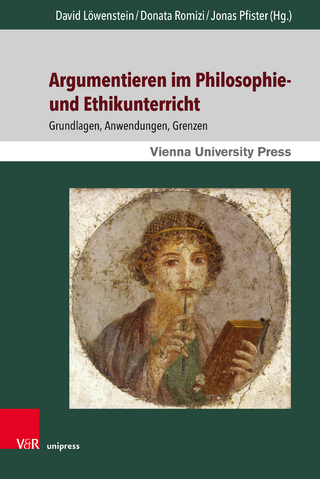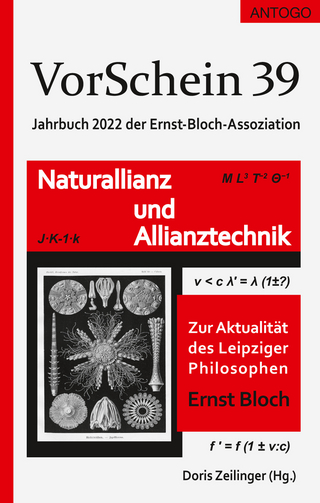
A Concise Introduction to Logic, International Edition (with Stand Alone Rules and Argument Forms Card)
Wadsworth Publishing Co Inc (Verlag)
978-1-111-18589-3 (ISBN)
- Titel z.Zt. nicht lieferbar
- Versandkostenfrei innerhalb Deutschlands
- Auch auf Rechnung
- Verfügbarkeit in der Filiale vor Ort prüfen
- Artikel merken
Unsurpassed for its clarity and comprehensiveness, Hurley's A CONCISE INTRODUCTION TO LOGIC, International Edition is the #1 introductory logic textbook in the market. In this Eleventh Edition, Hurley continues to build upon the tradition of a lucid, focused, and accessible presentation of the basic subject matter of logic, both formal and informal. Hurley's extensive, carefully sequenced collection of exercises continue to guide students toward greater proficiency with the skills they are learning.
Patrick Hurley received his bachelor's degree in mathematics (with a second major in philosophy and a physics minor) from Gonzaga University in 1964 and his Ph.D. in philosophy of science with an emphasis in history of philosophy from Saint Louis University in 1973. In 1972, he began teaching at the University of San Diego, where his courses included logic, philosophy of science, metaphysics, process philosophy, and legal ethics. In 1987, he received his J.D. from the University of San Diego, and he is currently a member of the California Bar Association. He retired from teaching in 2008, but continues his research and writing, including work on A Concise Introduction to Logic. His interests include music, art, opera, environmental issues, fishing, and skiing. He is married to Dr. Linda Peterson, who retired from teaching philosophy at the University of San Diego in 2015.
Preface
Part I: INFORMAL LOGIC.
1. Basic Concepts.
Arguments,Premises, and Conclusions . Note on the History of Logic. EXERCISE 1.1. Recognizing Arguments. EMINENT LOGICIANS: Aristotle. Simple Noninferential Passages. Expository Passages. Illustrations. Explanations. Conditional Statements. Summary. EXERCISE 1.2. Deduction and Induction. Ruth Barcan Marcus. Deductive Argument Forms. Inductive Argument Forms. Further Considerations. Summary. EXERCISE 1.3. Validity, Truth, Soundness, Strength, Cogency. Deductive Arguments. Inductive Arguments. Summary. EMINENT LOGICIANS: Chrysippus. EXERCISE 1.4. Argument Forms: Proving Invalidity. Counterexample Method. EXERCISE 1.5. Extended Arguments. EXERCISE 1.6. Summary.
2. Language: Meaning and Definition.
Varieties of Meaning. EXERCISE 2.1. The Intension and Extension of Terms. EXERCISE 2.2. Definitions and Their Purposes. Stipulative Definitions. Lexical Definitions. Precising Definitions. EMINENT LOGICIANS: Peter Abelard. Theoretical Definitions. Persuasive Definitions. EXERCISE 2.3. Definitional Techniques. Extensional (Denotative) Definitions. Intensional (Connotative) Definitions. EXERCISE 2.4. Criteria for Lexical Definitions. Rule 1: A Lexical Definition Should Conform to the Standards of Proper Grammar. Rule 2: A Lexical Definition Should Convey the Essential Meaning of the Word Being Defined. Rule 3: A Lexical Definition Should Be Neither Too Broad nor Too Narrow. Rule 4: A Lexical Definition Should Avoid Circularity. Rule 5: A Lexical Definition Should Not Be Negative When It Can Be Affirmative. Rule 6: A Lexical Definition Should Avoid Figurative, Obscure,Vague, or Ambiguous Language. Rule 7: A Lexical Definition Should Avoid Affective Terminology. Rule 8: A Lexical Definition Should Indicate the Context to Which the Definiens Pertains. EXERCISE 2.5. Summary.
3. Informal Fallacies.
Fallacies in General. EXERCISE 3.1. Fallacies of Relevance. 1. Appeal to Force (Argumentum ad Baculum: Appeal to theStick"). 2. Appeal to Pity (Argumentum ad Misericordiam). 3. Appeal to the People (Argumentum ad Populum). 4. Argument Against the Person (Argumentum ad Hominem). 5. Accident. 6. Straw Man. 7. Missing the Point (Ignoratio Elenchi ). 8. Red Herring. EXERCISE 3.2. Fallacies of Weak Induction. 9. Appeal to Unqualified Authority (Argumentum ad Verecundiam). 10. Appeal to Ignorance. (Argumentum ad Ignorantiam). 11. Hasty Generalization (Converse Accident). 12. False Cause. 13. Slippery Slope. 14. Weak Analogy. EMINENT LOGICIANS: William of Ockham
EXERCISE 3.3. Fallacies of Presumption, Ambiguity, and Grammatical Analogy. 15. Begging the Question (Petitio Principii). 16. Complex Question. 17. False Dichotomy
18. Suppressed Evidence. 19. Equivocation. 20. Amphiboly. 21. Composition. 22. Division
EXERCISE 3.4. Fallacies in Ordinary Language. Detecting Fallacies. Avoiding Fallacies. EXERCISE 3.5. Summary.
Part II: FORMAL LOGIC.
4. Categorical Propositions.
The Components of Categorical Propositions. Alice Ambrose. EXERCISE 4.1. Quality, Quantity, and Distribution. EXERCISE 4.2. Venn Diagrams and the Modern Square of Opposition. Aristotle and Boole. EMINENT LOGICIANS: George Boole. Venn Diagrams. The Modern Square of Opposition. Testing Immediate Inferences. EXERCISE 4.3. Conversion, Obversion, and Contraposition. Conversion. Obversion. Contraposition. EXERCISE 4.4. The Traditional Square of Opposition. Testing Immediate Inferences. EXERCISE 4.5. Venn Diagrams and the Traditional Standpoint. Proving the Traditional Square of Opposition. Testing Immediate Inferences. EXERCISE 4.6. Translating Ordinary Language Statements into Categorical Form. 1. Terms Without Nouns. 2. Nonstandard Verbs. 3. Singular Propositions. 4. Adverbs and Pronouns. 5. Unexpressed Quantifiers. 6. Nonstandard Quantifiers. 7. Conditional Statements. 8. Exclusive Propositions. 9.“The Only”
10. Exceptive Propositions. EXERCISE 4.7. Summary.
5. Categorical Syllogisms.
Standard Form, Mood, and Figure. EXERCISE 5.1. Venn Diagrams. EMINENT LOGICIANS: John Venn. Boolean Standpoint. Aristotelian Standpoint. EXERCISE 5.2. Rules and Fallacies. Boolean Standpoint. Aristotelian Standpoint. Proving the Rules. EXERCISE 5.3. Reducing the Number of Terms. Saul Kripke. EXERCISE 5.4. Ordinary Language Arguments. EXERCISE 5.5. Enthymemes. EXERCISE 5.6. Sorites. EXERCISE 5.7. Summary.
6. Propositional Logic.
Symbols and Translation. EMINENT LOGICIANS: Gottfried Wilhelm Leibniz. EXERCISE 6.1
Truth Functions. Definitions of the Logical Operators. Computing the Truth Value of Longer Propositions. Further Comparison with Ordinary Language. EXERCISE 6.2. Truth Tables for Propositions. Classifying Statements. Comparing Statements. EXERCISE 6.3. Truth Tables for Arguments. Ada Byron, Countess of Lovelace. EXERCISE 6.4. Indirect Truth Tables. Preliminary Skills. Testing Arguments for Validity. Testing Statements for Consistency. EMINENT LOGICIANS: Augustus De Morgan. EXERCISE 6.5. Argument Forms and Fallacies. Common Argument Forms. Refuting Constructive and Destructive Dilemmas. Note on Invalid Forms. Summary and Application. EXERCISE 6.6. Summary.
7. Natural Deduction in Propositional Logic.
Rules of Implication I. EXERCISE 7.1. Rules of Implication II. EXERCISE 7.2. Rules of Replacement I. Willard Van Orman Quine. EXERCISE 7.3. Rules of Replacement II. EXERCISE 7.4. Conditional Proof. EMINENT LOGICIANS: Gottlob Frege. EXERCISE 7.5. Indirect Proof. EXERCISE 7.6. Proving Logical Truths. EXERCISE 7.7. Summary.
8. Predicate Logic.
Symbols and Translation. EXERCISE 8.1. Using the Rules of Inference. EXERCISE 8.2. Change of Quantifier Rule. EMINENT LOGICIANS: Alfred North Whitehead and Bertrand Russell. EXERCISE 8.3. Conditional and Indirect Proof. EXERCISE 8.4. Proving Invalidity. Counterexample Method. Finite Universe Method. EXERCISE 8.5. Relational Predicates and Overlapping Quantifiers. Translating Relational Statements. Using the Rules of Inference. EXERCISE 8.6. Identity. Simple Identity Statements. EMINENT LOGICIANS: Kurt Gödel. "Only," "The Only," and "No . . . Except". "All Except". Superlatives. Numerical Statements. Definite Descriptions. Using the Rules of Inference. EXERCISE 8.7. Summary.
Part III: INDUCTIVE LOGIC.
9. Analogy and Legal and Moral Reasoning.
Analogical Reasoning. Legal Reasoning. Moral Reasoning. EXERCISE 9. Summary
10. Causality and Mill’s Methods.
"Cause"and Necessary and Sufficient Conditions. Mill’s Five Methods. Method of Agreement. Method of Difference. EMINENT LOGICIANS: John Stuart Mill. Joint Method of Agreement and Difference. Method of Residues. Method of Concomitant Variation. Mill’s Methods and Science. EXERCISE 10. Summary.
11. Probability.
Theories of Probability. The Probability Calculus. 1. Restricted Conjunction Rule. 2. General Conjunction Rule. 3. Restricted Disjunction Rule. 4. General Disjunction Rule. 5. Negation Rule. 6. Bayes’s Theorem. Additional Applications. EXERCISE 11. Summary.
12. Statistical Reasoning.
Evaluating Statistics. Samples. The Meaning of "Average". Dispersion. Graphs and Pictograms. Percentages. EXERCISE 12. Summary.
13. Hypothetical/Scientific Reasoning.
The Hypothetical Method. Hypothetical Reasoning: Four Examples from Science Radium. Neptune. Atmospheric Pressure. Spontaneous Generation. The Proof of Hypotheses. EMINENT LOGICIANS: Charles Sanders Peirce. The Tentative Acceptance of Hypotheses. EXERCISE 13. Summary.
14. Science and Superstition.
Distinguishing Between Science and Superstition. Evidentiary Support. Objectivity. Integrity. Concluding Remarks. EXERCISE 14. Summary.
Appendix: Logic and Graduate-Level Admissions Tests.
Answers to Selected Exercises.
Glossary/Index."
| Verlagsort | Belmont, CA |
|---|---|
| Sprache | englisch |
| Maße | 188 x 232 mm |
| Gewicht | 1010 g |
| Themenwelt | Geisteswissenschaften ► Philosophie ► Logik |
| Schlagworte | Philosophie |
| ISBN-10 | 1-111-18589-1 / 1111185891 |
| ISBN-13 | 978-1-111-18589-3 / 9781111185893 |
| Zustand | Neuware |
| Haben Sie eine Frage zum Produkt? |
aus dem Bereich


